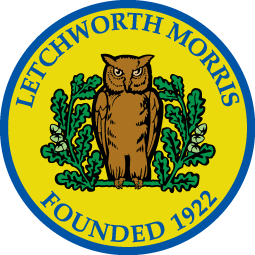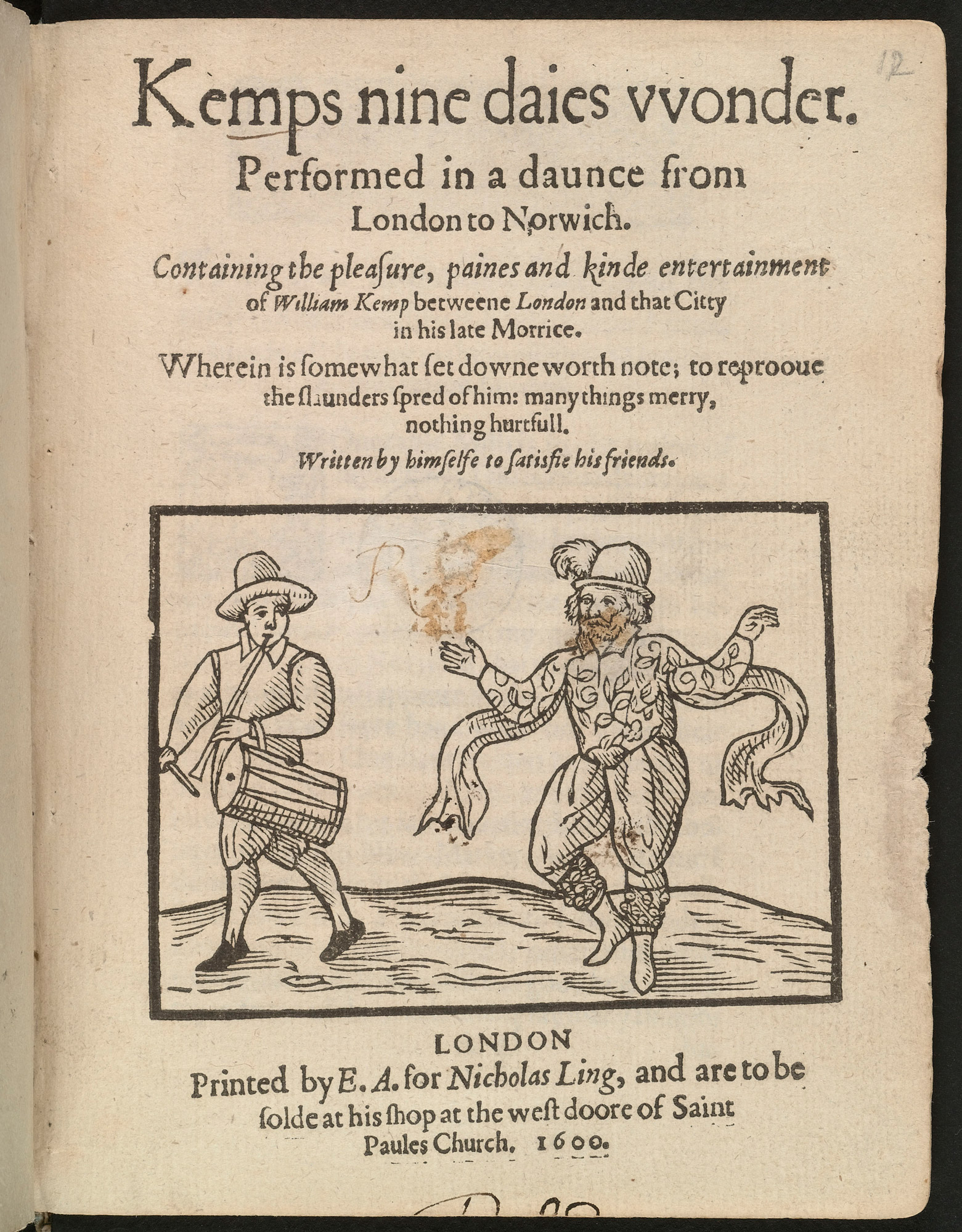THE ORIGINS OF THE MORRIS
The origins of the Morris are somewhat obscure. The earliest documentary references are mainly from church accounts – “Silver paper for the Mores-dawncers – 7d”, “for VI peyre shones for ye Mors dauncers – 4s” (1509/10). It was certainly thriving in Shakespeare’s time; Will Kemp’s “Nine Daies’ Wonder” was a Morris marathon from London to Norwich in 1600.
There are at least two theories for its progress before those times. One school of thought claims the dances came from Africa through Spain and France (where there are still dances very similar to the Morris) by the invading Moors, the word ‘Morris’ being a corruption of ‘Moorish’. The other main theory points to evidence of similar dances in England, long before the Moor, and they derive from the Druids’ Maris dances, in celebration of the God Maris.
By Elizabethan times, the Morris had become established in many areas, notably the Cotswolds, the Welsh borders and the North West of England. Each village developed its own style or ‘tradition’ of dance, many of which are ‘living’ and still evolving. Other traditions have died out and Morris sides now recreate these styles as recorded by collectors of folk history in the early part of the twentieth century, as well as creating new dances of their own.
THE REVIVAL
Cecil Sharp was one of the main collectors of the Morris dances and tunes in the early part of the twentieth century. Without this one man’s determination to record the dying traditions of the dance, it is highly likely that by now virtually nothing would have survived. The Morris world holds this man in such high regard that at feasts and formal occasions a silent toast – ‘The Immortal Memory’ is drunk in his honour. The paragraph below details his first chance meeting with Headington Quarry Morris Dancers.
“Sharp and his family spent that Christmas (1899) with his wife’s mother, who was then living at Sandfield Cottage, Headington, about a mile east of Oxford. On Boxing Day, as he was looking out of the window, upon the snow covered drive, a strange procession appeared: eight men dressed in white, decorated with ribbons, with pads of small latten-bells strapped to their shins, carrying coloured sticks and white handkerchiefs. Accompanying them was a concertina player and a man dressed as a ‘Fool’. Six of the men formed up in front of the house in two lines of three; the concertina player struck up an invigorating tune, the like of which Sharp had never heard before; the men jumped high in the air, then danced with springs and capers, waving and swinging their handkerchiefs which they held, one in each hand, while the bells marked the rhythm of the step.”
From Cecil Sharp by A.H. Fox-Strangeways (OUP, 1933)

